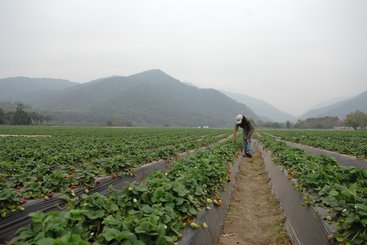Debt and economic crises can set back decades of gains in per capita incomes and poverty reduction in developing countries. Once cited as a success story in the developing world for meeting basic human needs for a low-income country as early as the late 1970s, Sri Lanka is in the midst of the worst debt and economic crisis since independence in 1948.
Debt servicing has become unsustainable with economic and political consequences. In a pre-emptive move, on 12 April 2022 Sri Lanka temporarily suspended foreign debt payments pending a bailout from the IMF. This may prompt international rating agencies to downgrade Sri Lanka to restrictive or selective default. Sri Lanka’s public debt to GDP ratio rose from 91% to 119% between 2018 and 2021. At the end of March 2022, Sri Lanka had external debt service payments of $6 billion for the remainder of 2022 against foreign reserves of US$1.9 billion. On 6 April 2022 all the members of a bloated 26-member cabinet resigned apart from the President and the Prime Minister following mass public protests over the rising cost of living and economic mismanagement.
Sri Lanka’s crisis is due to a combination of external economic shocks and policy mis-steps. The severe economic shock from Covid-19 meant an economic contraction of 3.6% in 2020 and an additional half a million new poor (mostly in urban areas, among formal sector employees and informal sector workers) fell into poverty. As economic recovery began, the Russia-Ukraine conflict shock hit the economy through higher import bills for fuel and food leading to double-digit inflation and a 30% depreciation of the rupee against the US$. These external shocks hammered an already weak economy reeling from the economic costs of a thirty-year civil conflict which ended in 2009, persistent fiscal and current account deficits, excessive foreign borrowing for low return infrastructure projects and rising external debt service. A successful Covid vaccine rollout was overshadowed by recent policy mis-steps like comprehensive tax cuts which reduced government revenues, banning imports of chemical fertilisers without preparing farmers which prompted a surge in food prices, maintaining a highly expansionary monetary policy beyond its shelf life and persisting with a fixed exchange rate without the foreign reserves to support it.
Sri Lanka’s experience offers five lessons for other indebted developing countries to mitigate the economic and social costs of a crisis.
1. Net benefits can result from going to the IMF early
The government hesitated for nearly 18 months after Covid hit from seeking IMF assistance to solve its balance of payments difficulties. Instead a raft of home grown remediates (e.g. loose monetary policy, stringent import controls and bilateral swap arrangements with regional economies) were deployed to little effect. Concerns existed within the government that the austerity policies the IMF demands would be politically unpopular (including public expenditure cuts, higher taxes, a floating exchange rate, and the removal of fuel subsidies). But the advantages of IMF assistance seem to have been underplayed including a low-interest loan to bail out Sri Lanka, the ability to borrow from international capital markets once again, and the benefit of IMF financial advice. A worsening economic and political crisis forced the government into a U-turn in mid-March 2022 that Sri Lanka will seek an IMF Programme.
2. Strengthen safety nets to mitigate poverty and political instability
Sri Lanka has a British style welfare system providing free health care and education as well as a Samurdhi poverty reduction initiative for 1.2 million families. However, these mechanisms were insufficient to stem growing poverty and social discontent over rising food inflation and shortages of food and fuel. In an ideal world, a temporary rationing system for basic food and fuel should be introduced early in a crisis, followed by donor-funded cash transfers targeted to the poorest.
3. A parallel requirement is effective crisis management capabilities
Sri Lanka has fragmented crisis management capabilities which hinders effective economic decision-making. In March 2020, a large and unwieldy Presidential Task Force was created to coordinate the Covid-19 response. In March 2022, two overlapping committees – one of key ministers and another of business leaders – were appointed to tackle the debt crisis. In early April 2022, a panel of eminent economists with experience of international institutions was appointed to advise the President on debt restructuring and the IMF programme. In an ideal world, a US style President’s Council of Economic Advisors should be mandated with offering objective economic advice to the President supported by a national economic monitoring unit within the Ministry of Finance.
4. A strong macroeconomic and financial regulatory structure is necessary to reduce the economic costs of a crisis
The Central Bank of Sri Lanka lies at the heart of Sri Lanka’s regulatory structure. However, a lack of autonomy means that the Central Bank’s monetary policy and exchange rate decisions were influenced by short-term political pressures. Not only is the Governor of the Central Bank appointed by the Sri Lanka’s President for a six-year term but the Monetary Board which manages the Central Bank includes the Secretary of the Treasury. In an ideal world, the Governor would be appointed by the President on the recommendation of a group of eminent persons (like a constitutional council without any parliamentarians) and the Monetary Board would have the Governor, a Deputy Governor and three independent members. The Treasury Secretary would not sit on the Monetary Board.
5. Conduct honest public communication to avoid the spread of misinformation
Historically, ineffective government communication has resulted in considerable public confusion and misunderstanding about Sri Lanka’s crisis and the IMF programme. The public has tended to rely on social media which has provided variable quality data and analysis. In an ideal world, a lean government information unit would be created staffed by media professionals dedicated to honest messaging about the economy.
There is no one size fits all approach to economic crisis management. These lessons from Sri Lanka’s experience should be tailor-made to the circumstances of others facing similar circumstances.

